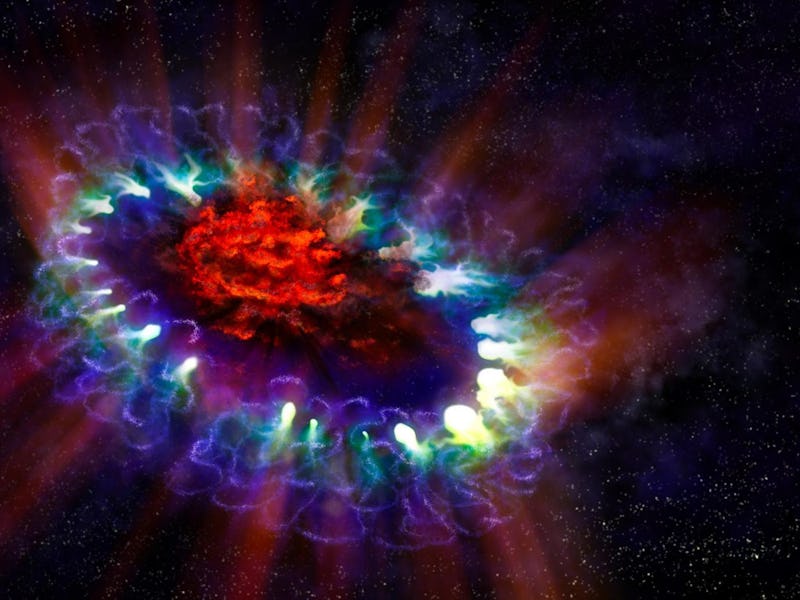A Closer Look at Supernova Dust Challenges Star Birth Theories

When a massive star explodes, it shoots out an expanding ball of gas called a “supernova” that triggers a neutron star or a black hole in its wake. Astronomers have traditionally thought that these dazzling explosions don’t leave behind any surviving molecules, but a recent look at the cosmic dust remnants of Supernova 1987A suggests that this isn’t true and challenges conventional theories about how stars are born.
Supernova 1987A is the aftermath of a star that astronomers witnessed explode in 1987 (an extremely rare and lucky observation); it lies about 160,000 light-years away from Earth. Scientists have just discovered molecular compounds in the center of the supernova, including two that are the subject of a study published in the Monthly Notices of the Royal Astronomical Society: formylium (HCO+) and sulphur monoxide (SO).
“This is the first time that we’ve found these species of molecules within supernovae,” says the study’s lead author, Dr. Mikako Matsuura, “which questions our long held assumptions that these explosions destroy all molecules and dust that are present within a star.”
An artist's rendering of Supernova 1987A.
Contrary to those assumptions, it seems that the elements within the supernova’s leftover gas begin to create molecules as soon as they cool to a temperature beneath around 390 degrees Fahrenheit. Instead of a desolate environment, this is a “dust factory,” in the words of Dr. Matsuura.
“What is most surprising is that this factory of rich molecules is usually found in conditions where stars are born,” she says. “The deaths of massive stars may therefore lead to the birth of a new generation.”
Astronomers were able to find these molecules using a network of telescopes known as the Atacama Large Millimeter/submillimeter Array (ALMA), which can detect light wavelengths between the infrared and radio spectrum. ALMA enables researchers to get a good look at the molecules in the exploded star’s core that are bright at those wavelengths.
ALMA’s new data has also allowed scientists to create a 3D model of the remnant of Supernova 1987A.
3D model of the center of the remnant of Supernova 1987A
Astronomers have been studying this supernova since its explosion 30 years ago; this data transforms their theories about what occurs in the aftermath of such an explosion.
“Thanks to ALMA, we can finally see cold ‘star dust’ as it forms,” says astronomer Rémy Indebetouw, “revealing important insights into the original star itself and the way supernovas create the basic building blocks of planets.”